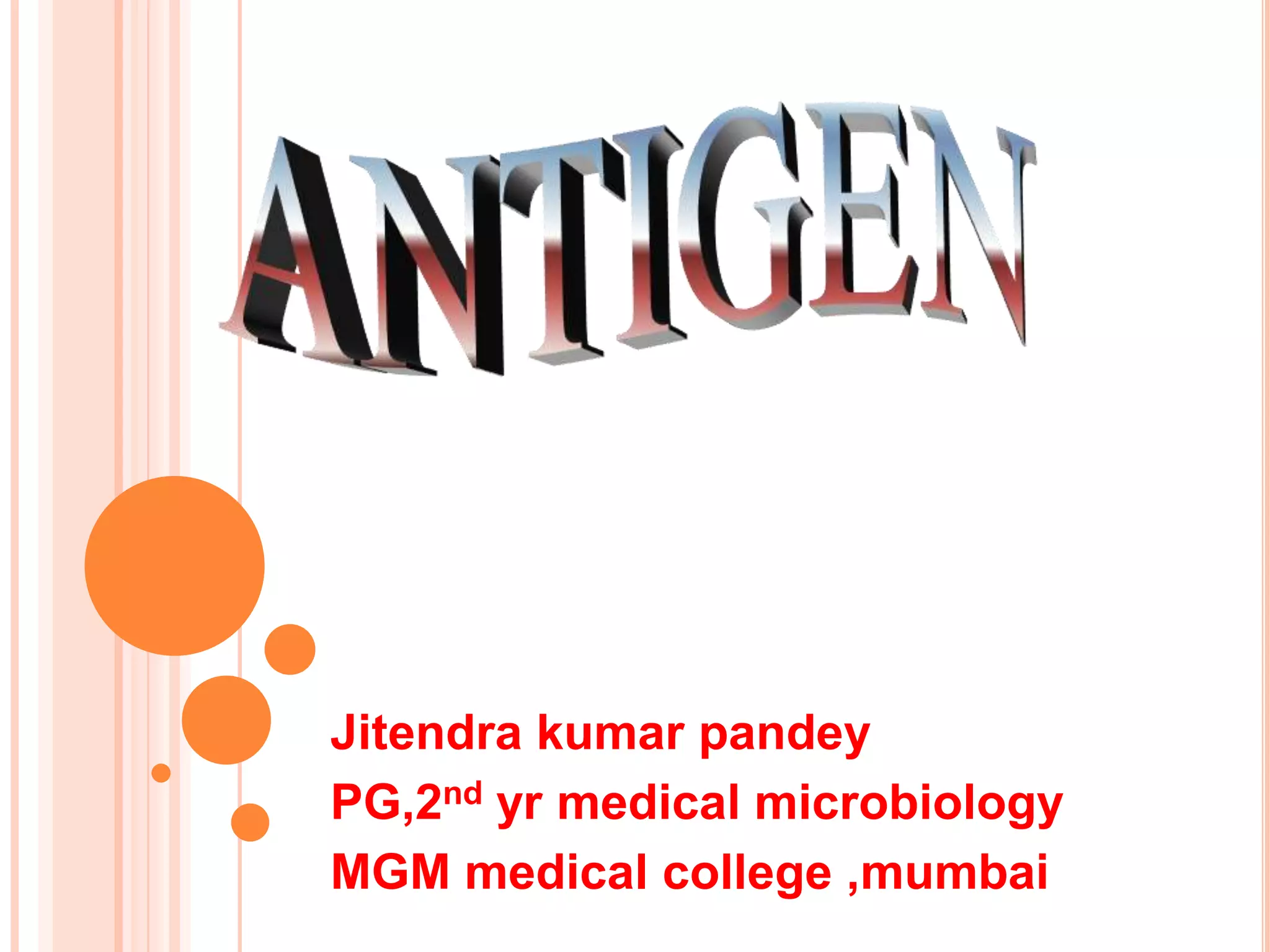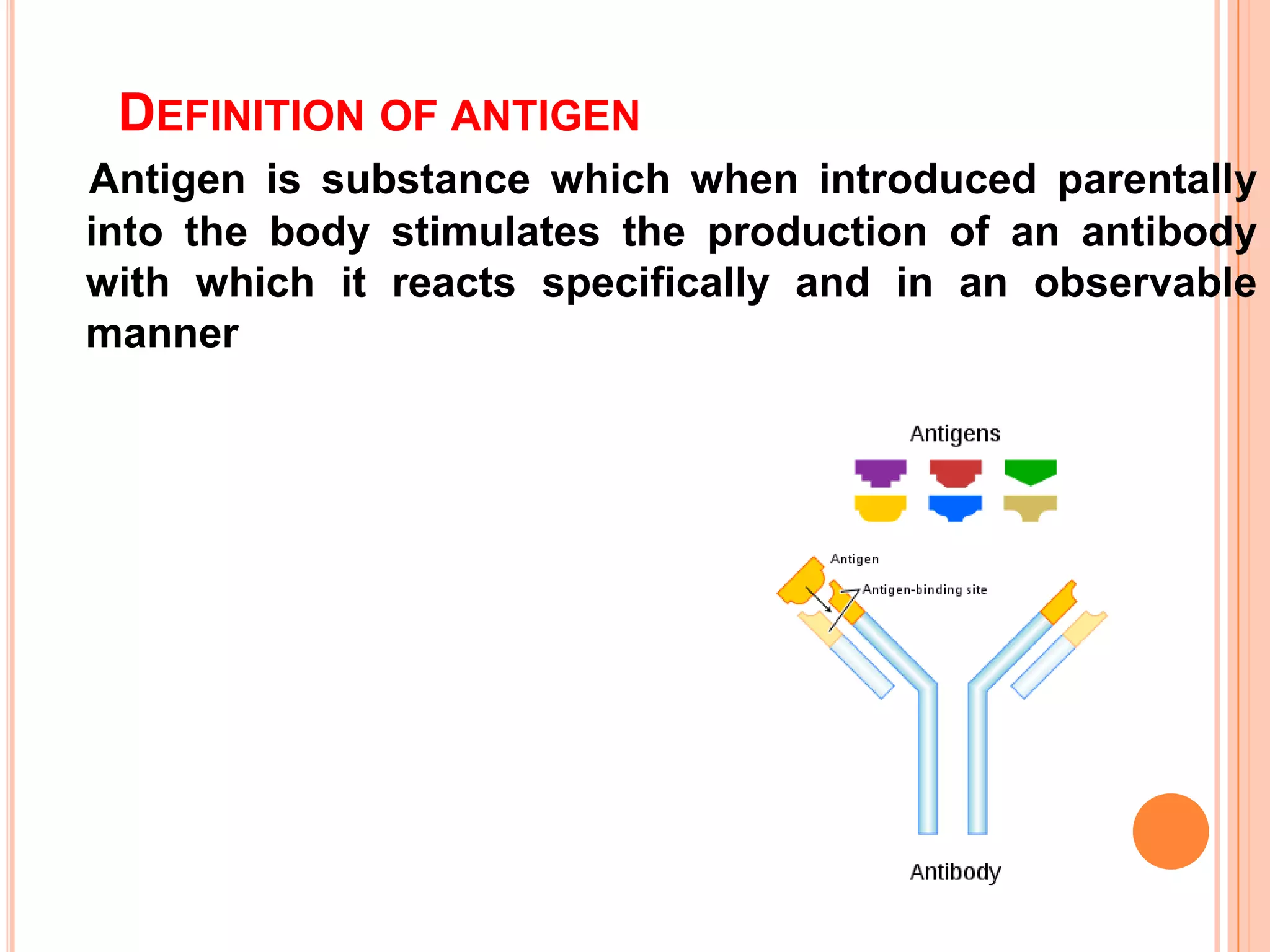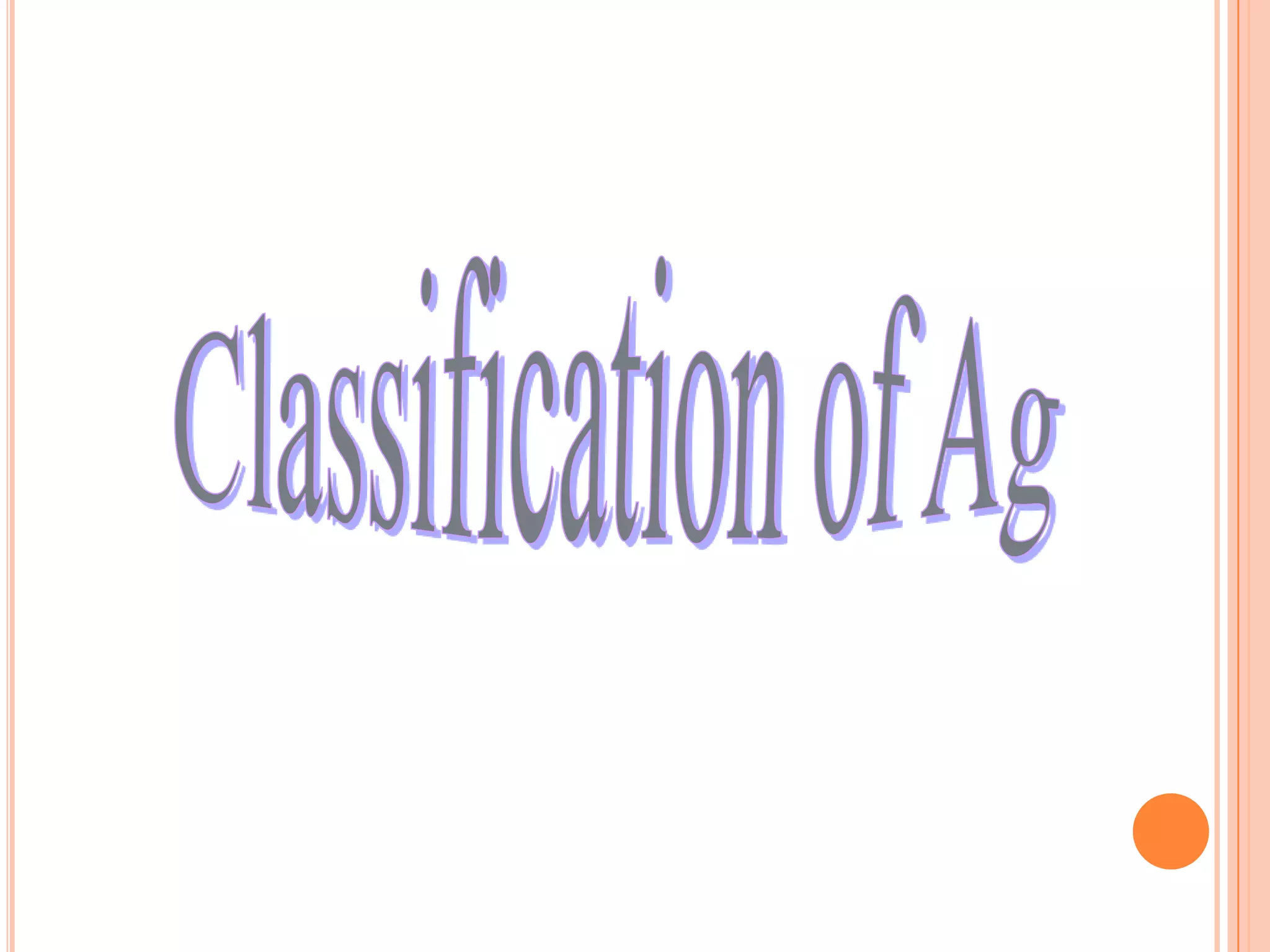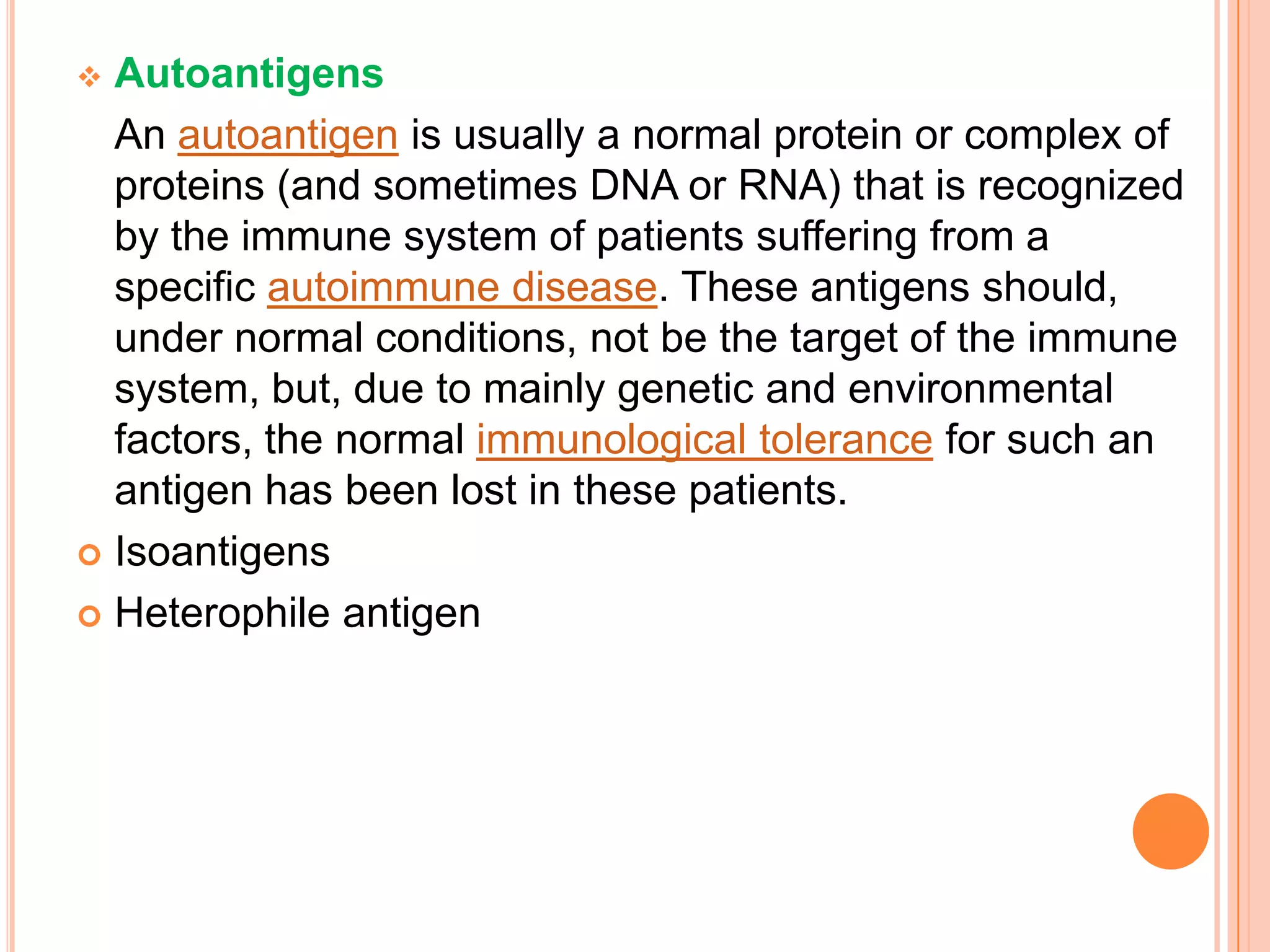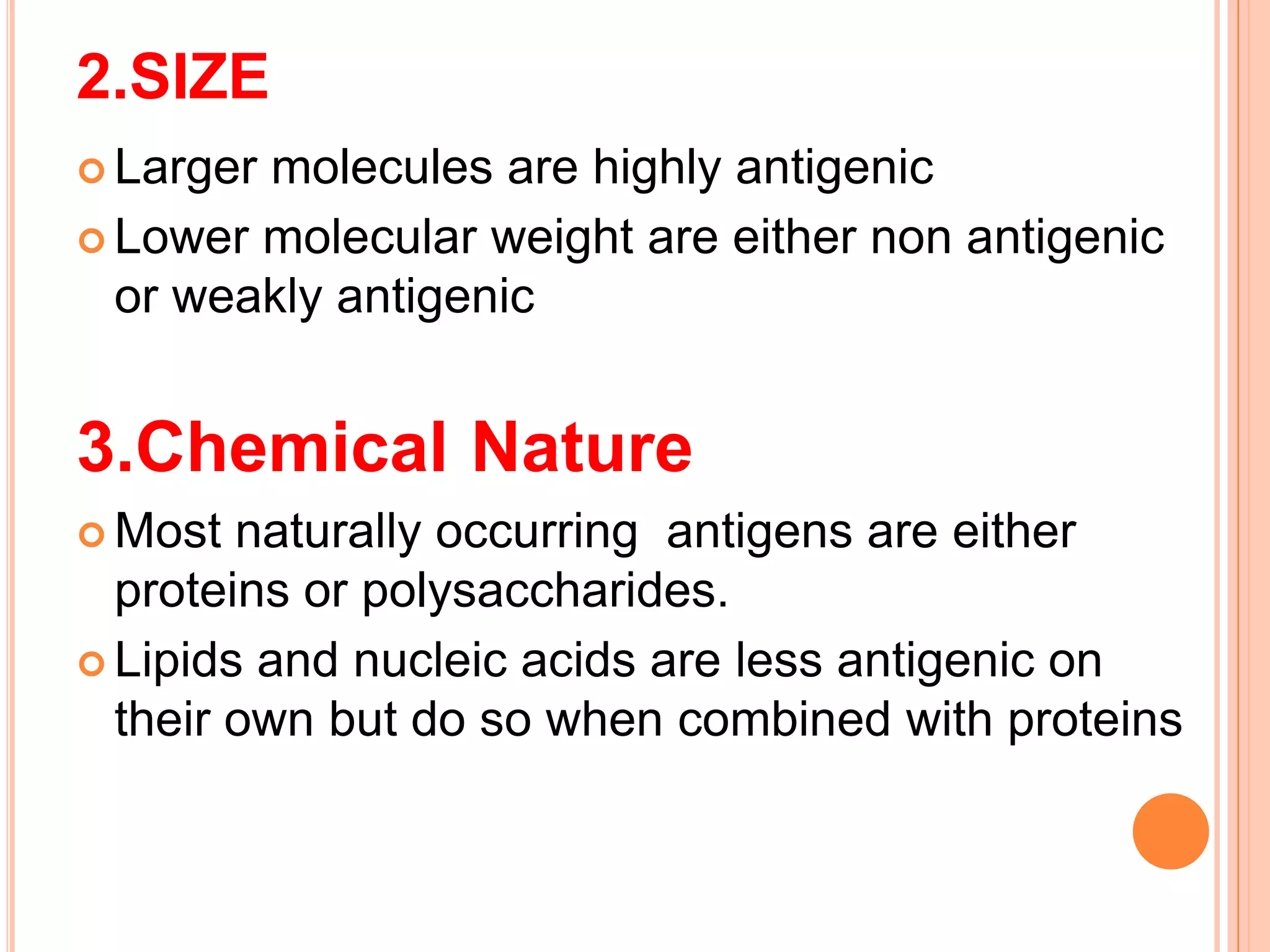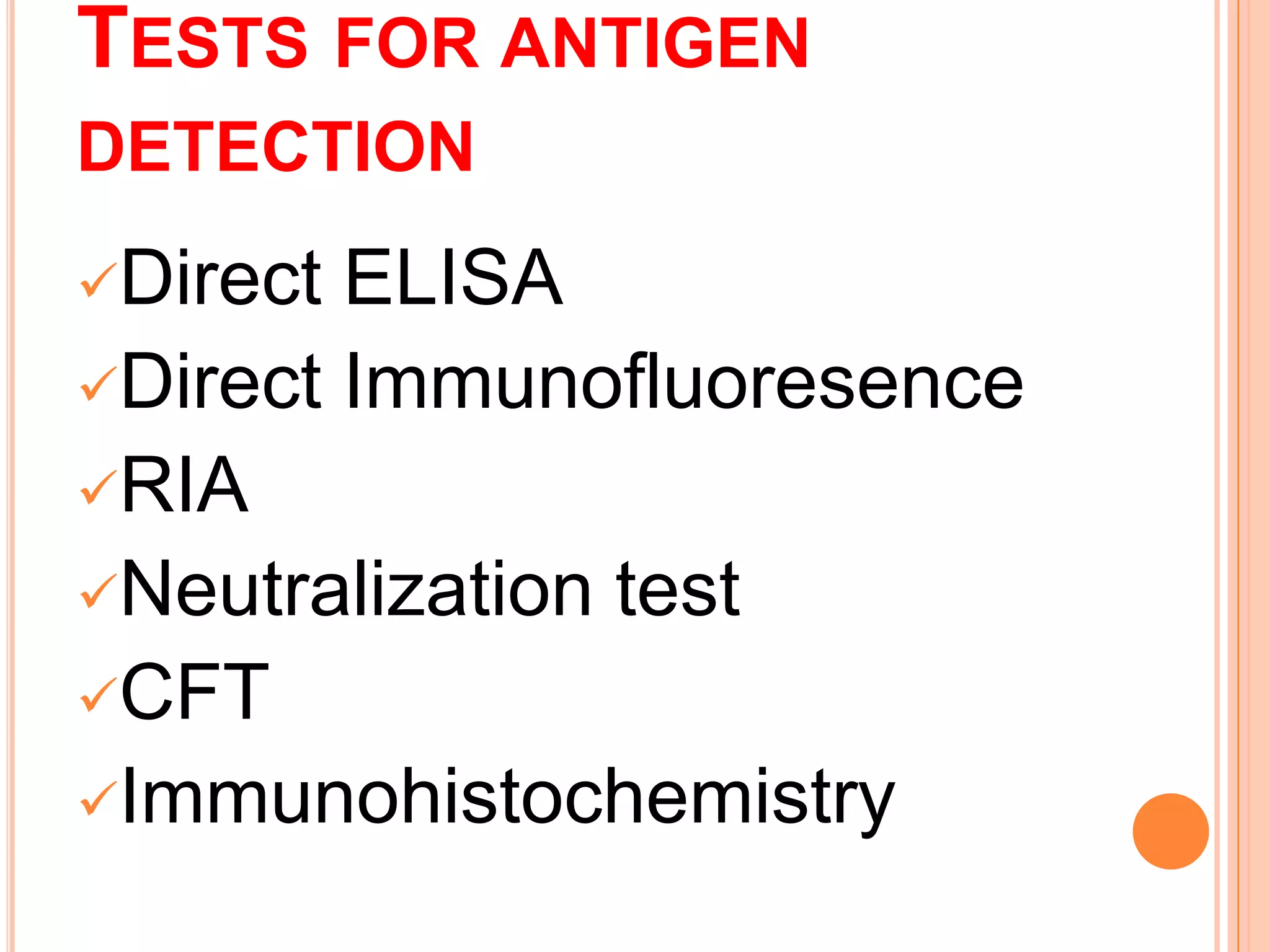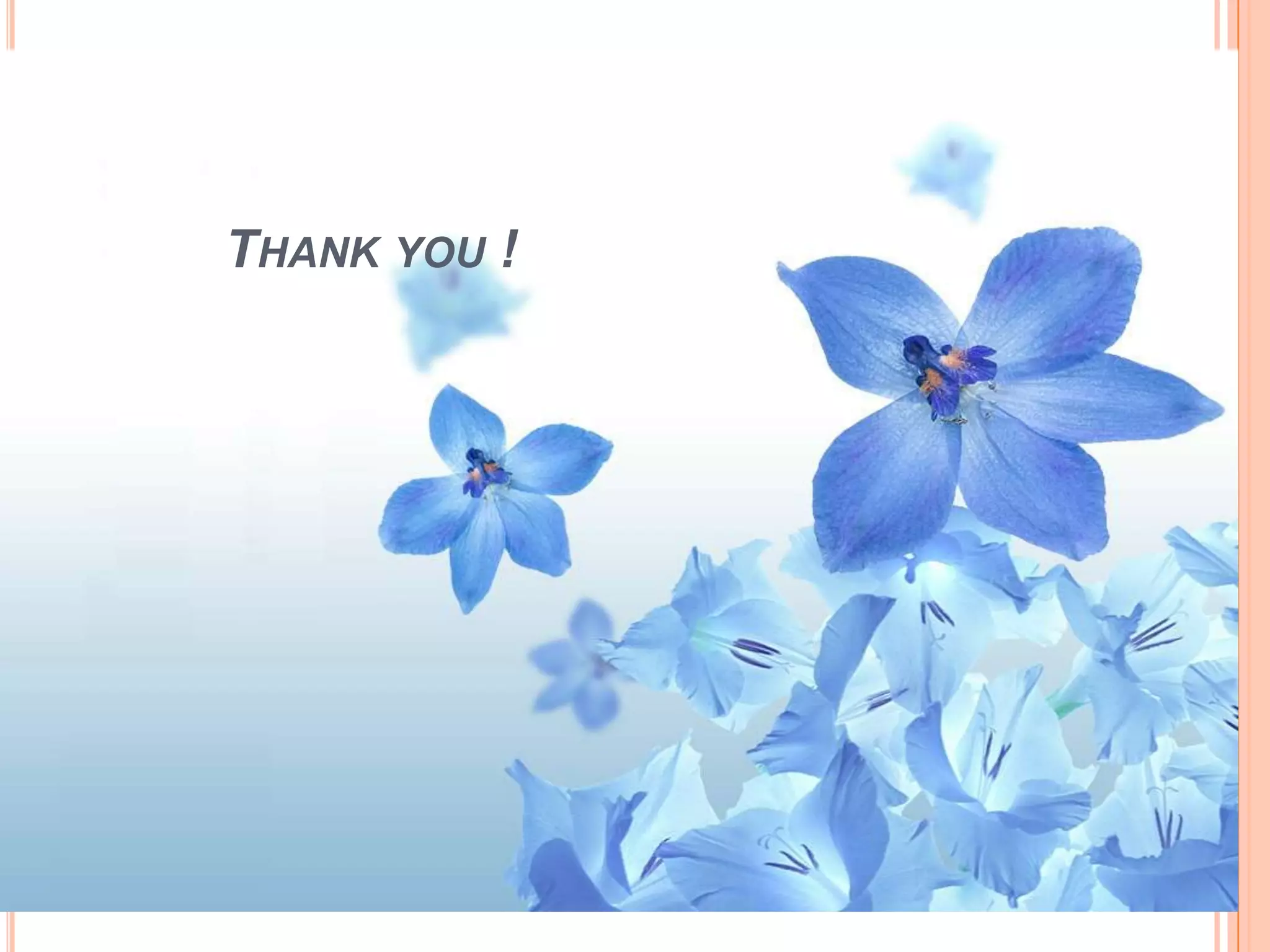This document defines and discusses antigens from several perspectives:
1) It provides a brief history of the term "antigen" and its definition as a substance that stimulates antibody production.
2) It classifies antigens based on their immunogenicity as complete or incomplete antigens.
3) It categorizes antigens based on their origin as exogenous, endogenous, autoantigens, isoantigens, or heterophile antigens.
4) It lists 10 properties that determine an antigen's ability to stimulate an immune response, including foreignness, size, chemical nature, and specificity.
5) It briefly discusses superantigens and common tests used to detect antigens.
